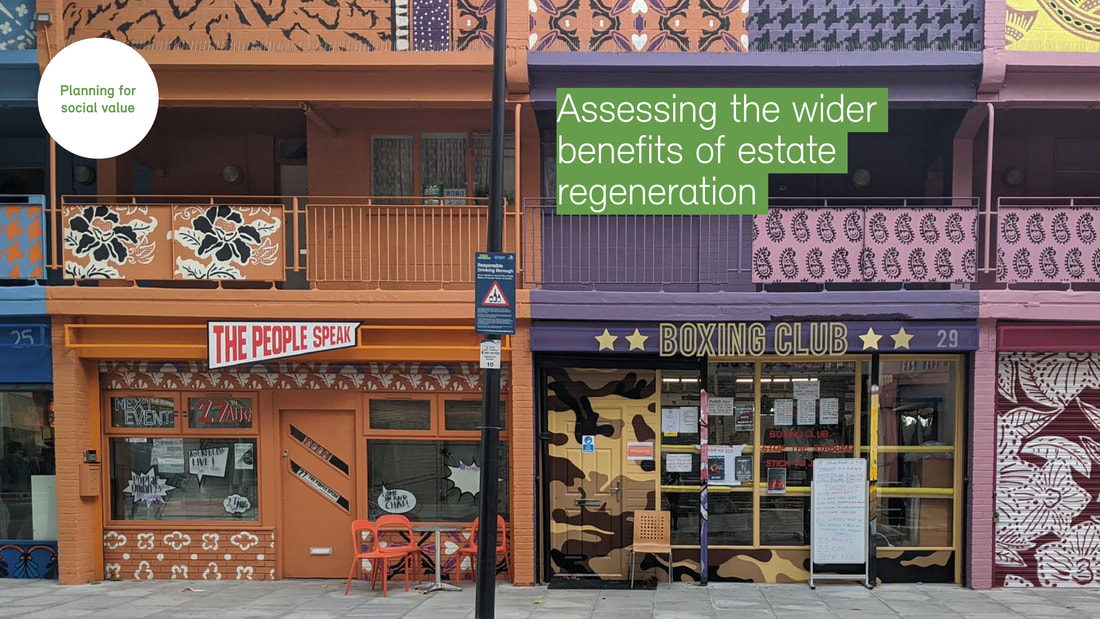|
Assessing the wider benefits of estate regeneration.
Getting buy-in from residents, funders, local politicians and local authorities means persuading people of the wider value that estate regeneration can bring to communities. Evaluation of the benefits of an estate regeneration project goes way beyond the number and cost of homes delivered. It needs to look more holistically at a wider range of issues. These include sustainability from environmental and fuel poverty perspectives, reduction of anti-social behaviour and crime, improving life chances and wellbeing, delivering more and better homes that are suited to both current and future lifestyles, as well as viability and cost. By including a more holistic and long-term approach to social value, projects can help deliver benefits to those living and working on an estate, and also to neighbours, who will not benefit directly from a new or improved home. In this chapter we examine the wider value of estate regeneration and how to evaluate social value, environmental sustainability and community engagement, all of which are increasingly important factors in the planning system. We begin though with a look at how other important developments in planning, including a new approach to local plans, will also affect the realisation of estate regeneration. To read the full theme please download the report. |
Recommendations
|

